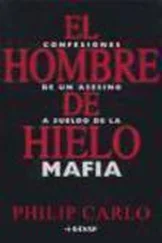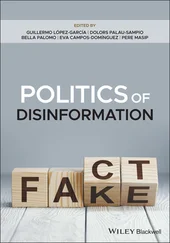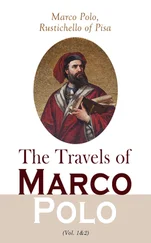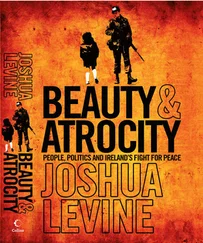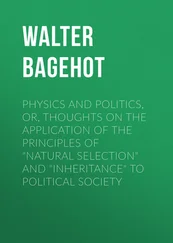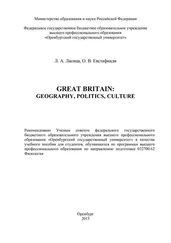We are again getting close to the central thrust of the book: the mafia is a historically grounded and culturally informed manifestation of a way of organizing political relationships and political life that is different, and alternative, to the modern European state as grounded on the rule of law. This may be apparent in the case of Asian mafias, like yakuza and triads, but it has to be recognized in Western cases like the Italian mafias as well. As a Mediterranean institution focused on personal ties and obligations among selected males, the Sicilian mafia asks to be understood not as a failure of the modern Western state (and its companion, ‘civil society’), nor as an industry (whose conditions of existence are rooted in the failure of the state to provide generalized trust), but as a different, typically Southern, institutional arrangement of social life with strong political implications .
As a long, though not mainstream, tradition of scholarship – call it the political-realist tradition, not by chance strongly embedded in Italian intellectual life at least since Machiavelli (see Levine 1995), and in modern times advanced and promoted by a Sicilian scholar like Mosca (1939 [1896]) – holds, politics as human activity occurs in every situation where a group of people organizes itself and works for improving their well-being by trying to persuade others of their legitimacy and justification as power-holders, even in spite of their arbitrariness and violent enforcement of their rule (Mouffe 2005; see also Miglio 2011). There is nothing intrinsically good in the political field, apart from the desired well-being of its most powerful and successful agents, especially when seen from their particular point of view. Like many effective political actors, mafia groups usually succeed in presenting themselves – not only to their members, but to other constituencies as well – as legitimate guarantors of social order and efficacious providers of collective opportunities. This is what makes mafia associations different from common criminal groups or gangs, and makes them potentially relevant actors in the same political field in which the state (with its many elements and fragments) acts as the legitimate and legal provider of order, while being only one of the main actors in concrete situations. This grassroots legitimacy – which is empirically documented in many instances of mafia history – has to be accounted for in any sociological understanding of the mafia. This asks for a culturally sensitive approach to mafia, open to accepting the ‘natives’ point of view’ as well as the effectiveness of its working as a social organization in local conditions. Only from this standpoint can we hope to grasp the meaningful structures through which mafiosi interact and really construct their social world, making it understandable and meaningful to both them and their social constituencies – including interested partners.
Culture is indeed a crucial aspect of the mafia, as of every other social thing, as a focus on its articulated symbolism and its communicative features immediately shows. This has long been recognized, of course, but has been incredibly forgotten or minimized in the most recent literature – probably because of an awareness of the traps that the concept of culture may convey. 6But the discussion of culture, the concept of culture and cultural analysis has not stopped with Talcott Parsons and 1950s American functionalism, as many mafia scholars seem to believe. Fortunately, recent developments in cultural sociology (e.g., Alexander et al. 2011; Inglis and Almila 2016) offer tools and concepts useful for penetrating the symbolism and cultural structures of the mafia way of life without falling either into the reductionism of rational action theory (RAT) and the ethological model of communication analysis (such as signalling theory: see Gambetta 2009), or into the weaknesses and tautologies of traditional cultural theory grounded on functionalism (strongly and rightly rejected by Gambetta and others, who, however, err in considering this tradition as the cultural approach, without realizing that it is just one, and among the weakest, possible approach to cultural analysis; e.g., Alexander 2003; see also Swidler 1986; Sewell 2005; Santoro and Solaroli 2016).
A Final Note on Sources and Method
This book is not based on new ethnographic or statistical or historical evidence. Even if it makes use of some undervalued and neglected sources, it is an exercise in metatheorizing. At the same time, it is an attempt to reflect, utilizing new theoretical resources, on a relationship that has often been studied by scholars of mafia, including scholars of so-called ‘organized crime’ (an expression I would always put in quotation marks for reasons I will explain in the next chapter): namely, the relationship between social reality and imagination – sociological imagination, but also literary imagination, and any other kind of imagination through which representations are generated and transmitted. In this exercise, I have relied upon an array of different kinds of sources:
sociological, anthropological and historical studies on the Sicilian mafia, since its inception in post-unification Italy to current studies of various kinds of mafias all over the world;
literary sources, with all the caveats suggested by the rich tradition of literary sociology (for praises of literature as strategic sources for sociohistorical research, especially on crime, see Benigno 2015 and Boltanski 2014);
investigations by journalists and reporters, recalling that journalism is a field with its own rules (Benson and Neveu 2005) and, no different from criminology, history or sociology, which means journalistic sources have to be weighed against these rules;
autobiographies and memories of mafiosi or people close to them;
judicial and police sources, and other institutional (state) sources, such as parliamentary inquiries and committee hearings.7
Whenever possible, I have privileged sources coming directly from mafiosi voices or writings, beyond the state officers’ mediation (as in police reports or trial proceedings) and possibly even scholars’ mediation (e.g., Arlacchi’s edited interviews, or even ghost writers or co-authors, albeit in the latter cases we can assume mafiosi viewed and accepted the text). This means that I have privileged sources such as letters, verbatim witness accounts, taped conversations and the like. In reading these sources, I have used every available critical methodology useful for deciphering or better discovering and extracting ‘hidden voices’ between the lines, and capable of keeping any bias coming from state-mediated representations under control (from Bourdieu’s field analysis to Carlo Ginzburg’s evidential paradigm, from critical discourse analysis to deconstruction).
1 1 It is worth noting that the original Italian subtitle of the bestseller Gomorrah (Saviano 2007) was Viaggio nell’impero economico e nel sogno di dominio della camorra, i.e. A journey into the camorra’s economic empire and dream of domination (see Saviano 2006). In other words, the mafia’s reality is business, politics is in its fantasies.
2 2 So ancient that its elements could be traced back to Ancient Greece: see van Wees (1999, 2001).
3 3 As it is clear, I see no reason to give the label infrapolitics to what is in fact ‘politics’ – for everything except the fact that it is enacted by people not formally in dominant positions.
4 4 A symmetry that is not different from that advanced by proponents of the Strong Program in the sociology of science in asking for the equal treatment of false beliefs and ‘true’ (i.e. not yet falsified) theories as research projects, or from ANT scholars (e.g., Bruno Latour, Michel Callon, John Law and others), who claim that human and nonhuman actors embedded in a network should be treated equally and described in the same terms (they call it the principle of generalized symmetry). The rationale for this principle is that differences between these actors should not be presupposed, as they are generated in the network of relations. See in general Latour 2005.
Читать дальше

